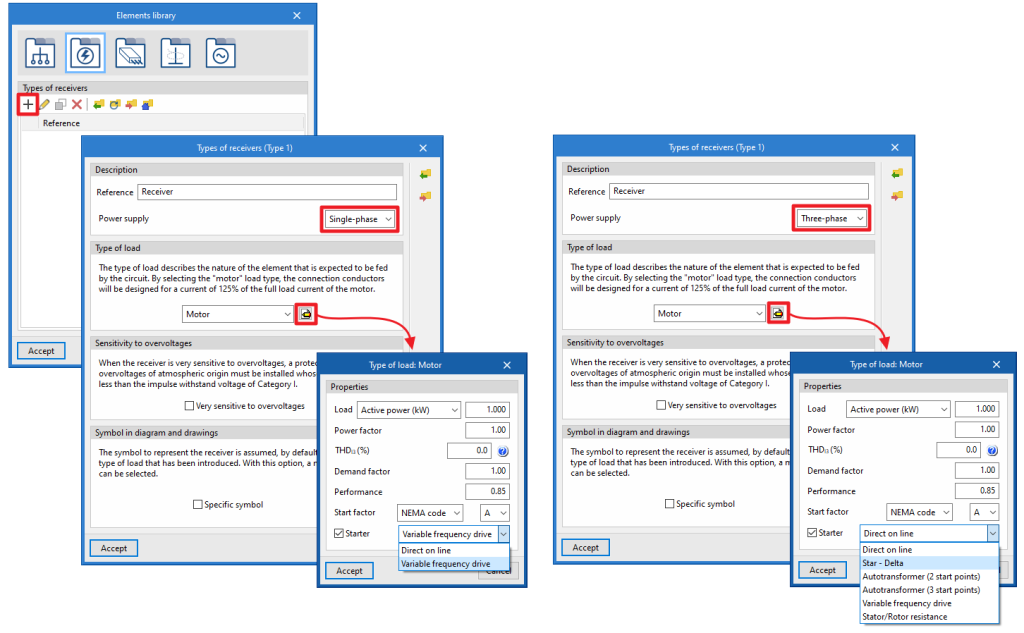Motors
The program checks the starting current of motors and allows the use of starters to reduce the starting current and thus limit its impact on the system. It also considers the contribution of asynchronous motors to short-circuit currents.
Checking the starting current of motors and the use of starters
When starting up, asynchronous motors require higher current levels than those they consume under nominal operating conditions. These overcurrents can generate very high voltage drops in the system, which is why the different electrical regulations limit the ratio between the starting current and the rated current depending on the power of each particular motor.
The program can set the starting data either by manually entering a rated current multiplier coefficient or by using the nomenclature of the American standard established by the NEMA code, which appears in the technical specifications of some motors.
A start can be selected to reduce the starting current and thus limit its impact on the system. The types of start that can be selected are as follows:
- For motors with single-phase or two-phase supply:
- Direct on line
- Variable frequency drive
- For motors with three-phase supply:
- Direct on line start
- Star - Delta start
- Autotransformer start (2 start points)
- Autotransformer start (3 start points)
- Variable frequency drive start
- Stator/Rotor resistance start
Not only does the selected starter affect the calculation, but it is also reflected in the single-line diagram with its corresponding icon.
Contribution of asynchronous motors to short-circuit currents
Due to the inertia of the motors at the time the short-circuit occurs, each of them transiently becomes a source of power generation that contributes to increasing the value of the maximum short-circuit current. For this reason, and following the guidelines of the IEC 60909 standard, this circumstance has been implemented in such a way that the real value of the short-circuit current in each of the lines of the system is taken into account.


